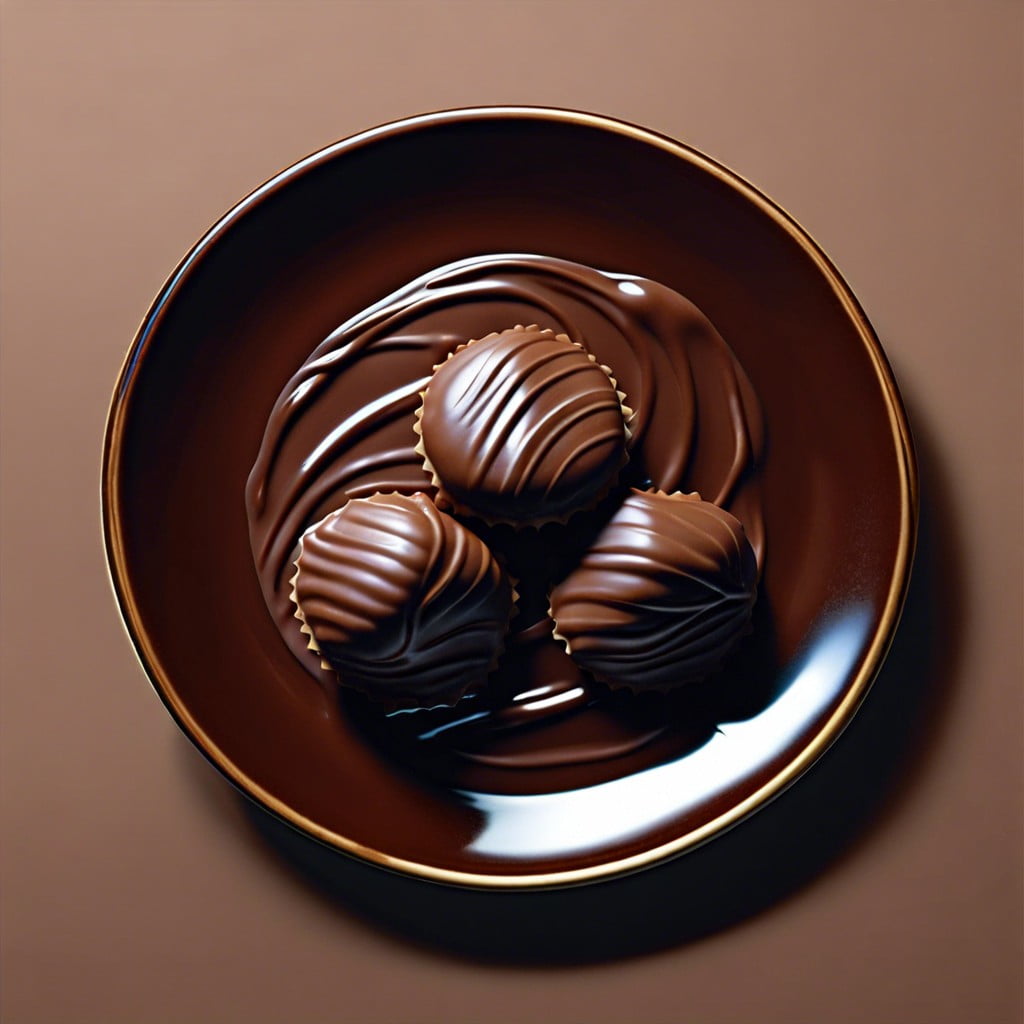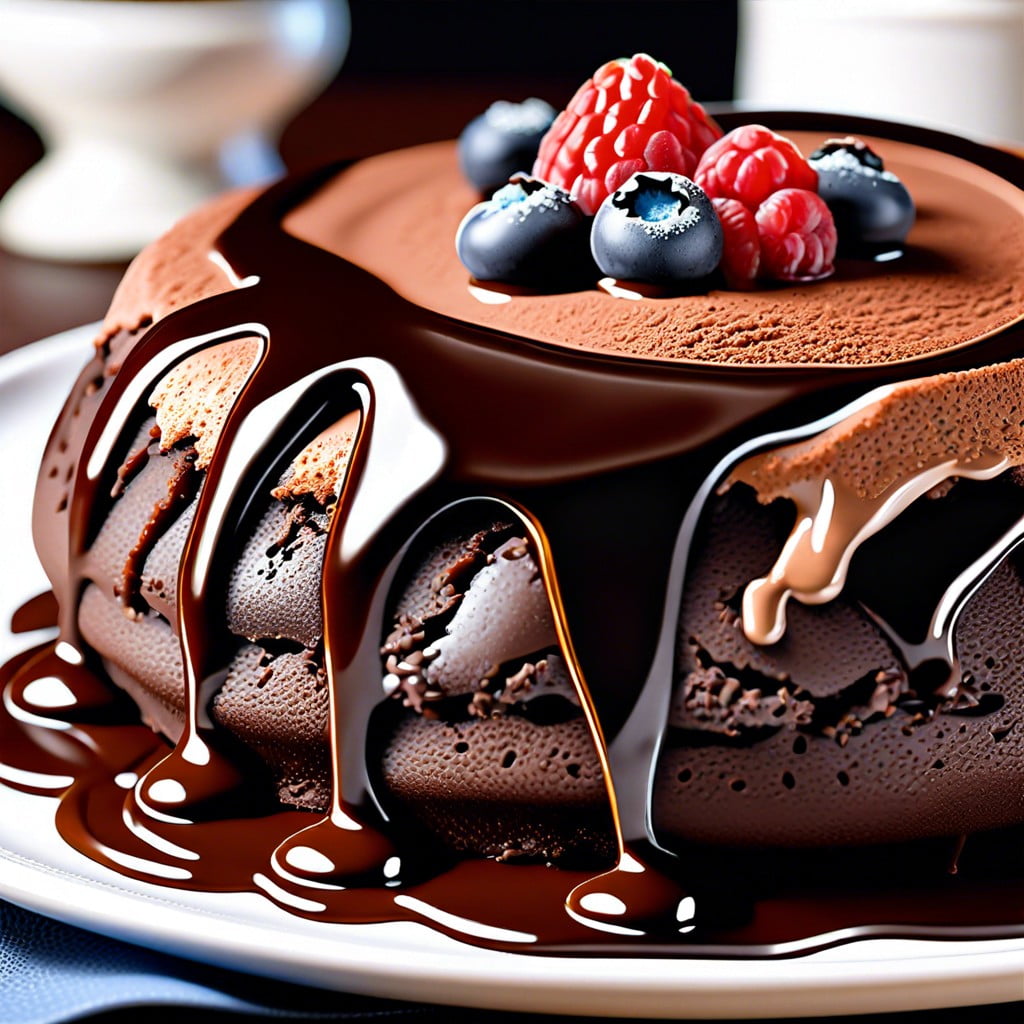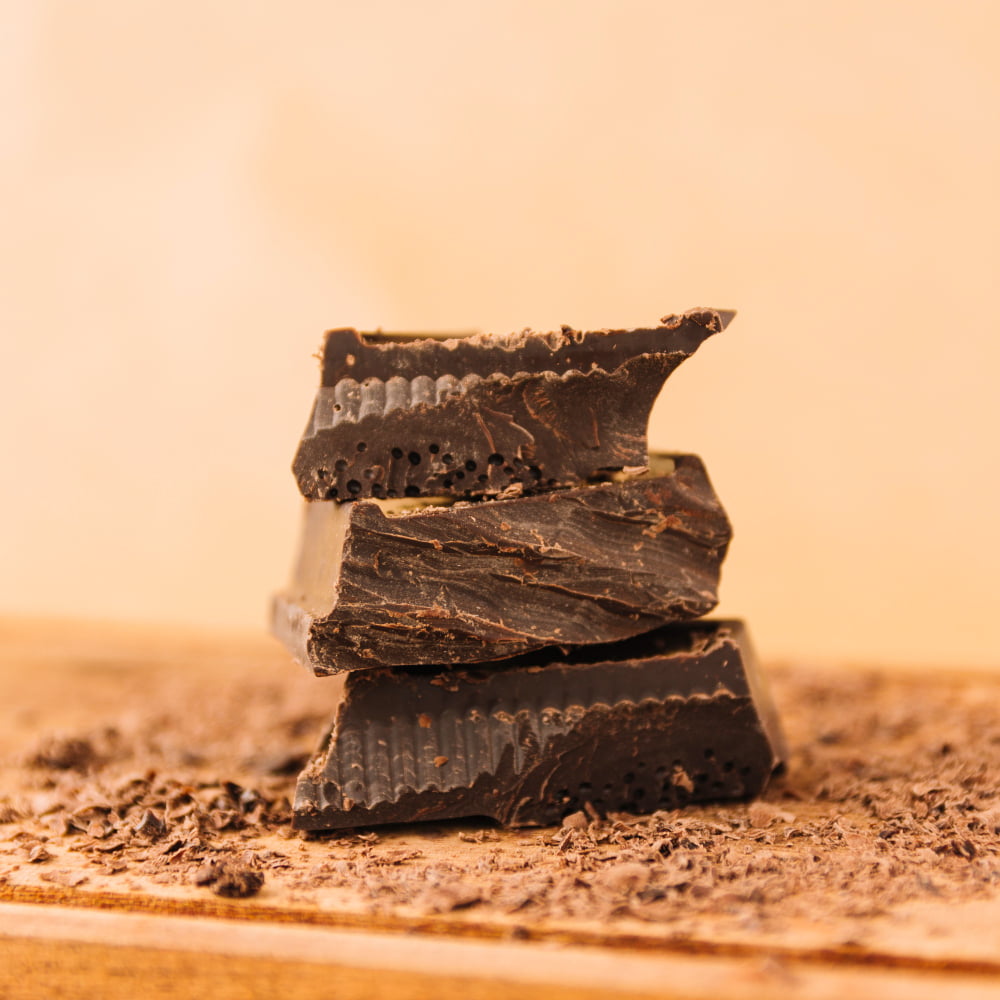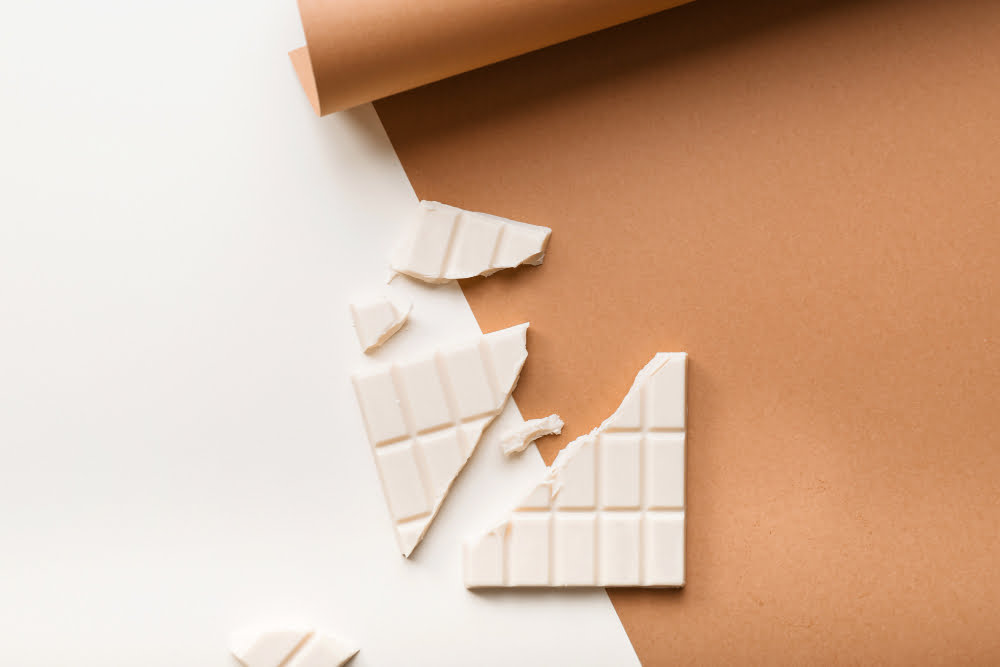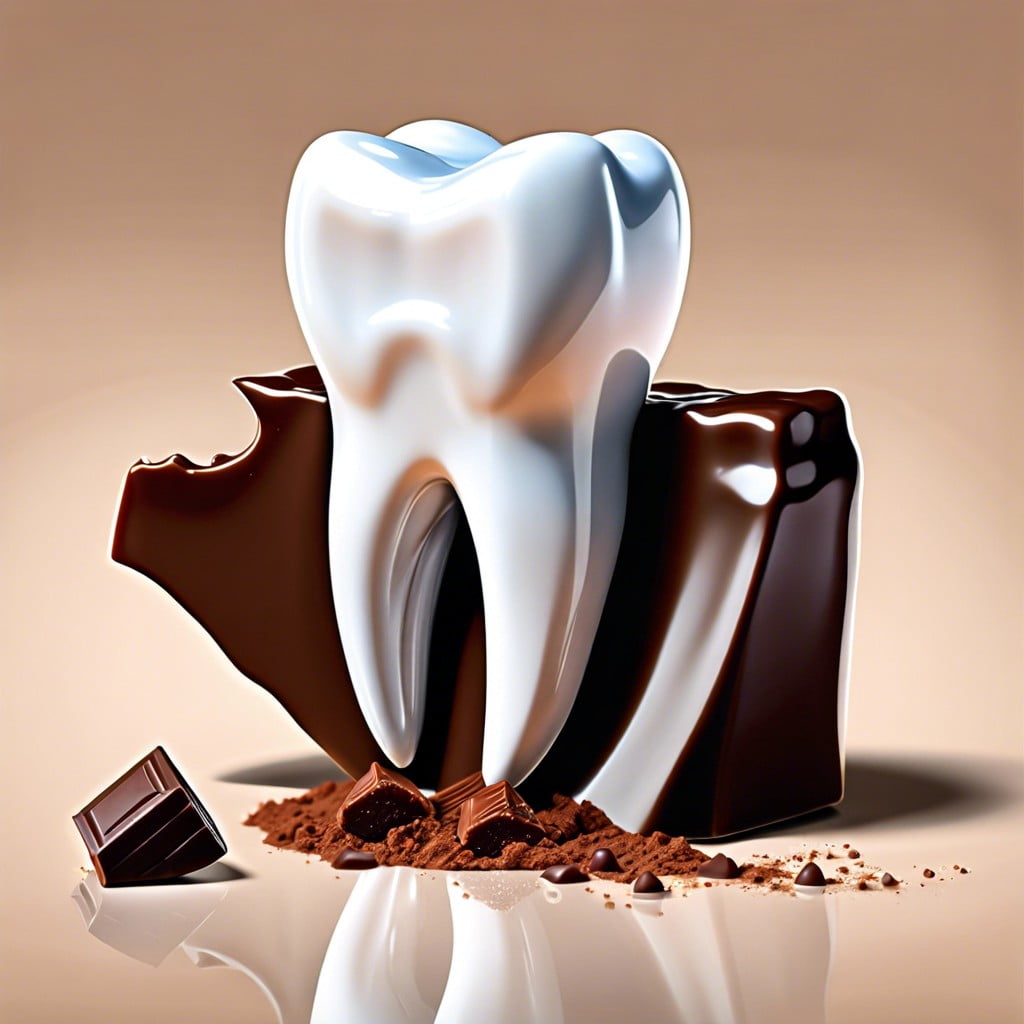Exploring the impact of different types of chocolate on teeth staining, this blog offers practical tips to minimize and manage discoloration.
All types of chocolate, be it dark, milk, or white, can potentially stain teeth due to their sugar and chromogen content. Chromogens are compounds with strong pigments that can cling to your tooth enamel, causing discoloration. The sugar in chocolate can also lead to plaque buildup, which in turn attracts more chromogens.
However, there’s no need to forego your favorite treat entirely. Incorporating proper dental hygiene, such as brushing and flossing after consuming chocolate, can help prevent stains. Regular dental check-ups and professional cleanings are also crucial. For severe stains, consider professional whitening treatments.
This article will delve into these aspects in more detail, providing a comprehensive guide on how to enjoy chocolate without compromising your pearly whites.
Key takeaways:
- All types of chocolate can stain teeth due to sugar and chromogens.
- Proper dental hygiene and regular check-ups can prevent stains.
- Dark chocolate has antioxidants that can resist bacterial growth.
- Drinking water after consuming chocolate can help rinse away particles.
- Consult your dentist for professional whitening treatments.
Inside
Impact of Chocolate On Teeth Staining
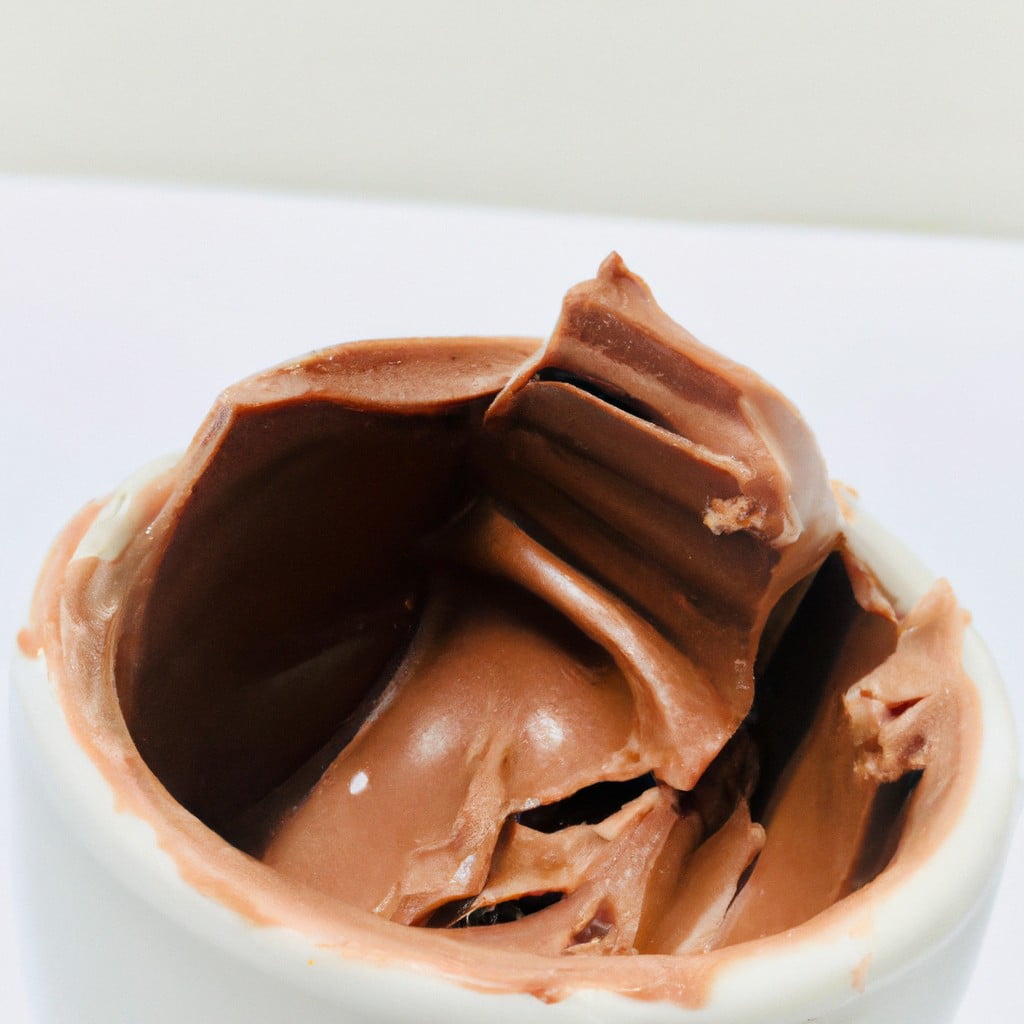
Chocolate, particularly dark varieties with high cocoa content, contributes to teeth discoloration over time due to its natural pigmentation and slightly acidic pH. The pigmentation in darker chocolates especially can embed into the enamel of your teeth, leading to a dull, discolored appearance.
The effect of chocolate on tooth staining is also heightened when it’s consumed frequently or in large quantities. Its somewhat acidic nature can gradually erode the enamel, providing a rougher texture where pigments can more easily drain and settle.
To mitigate this, consider limiting your chocolate intake or interspersing it with other foods. Dentists recommend swishing drinkable water in your mouth post-consumption to rinse away any remaining chocolate particles and potentially reduce staining. Regular and thorough brushing, along with flossing, can also help minimize the visual impact.
Consider professional cleaning or whitening treatments for more noticeable discoloration. Please be aware that results vary based on individual enamel strength and shade before treatment. Always consult your dentist before beginning any new dental regimen or whitening process.
Differences in Tooth Staining Between Dark and Other Chocolates
Dark chocolate, notably higher in cocoa content, contains beneficial antioxidants potentially reducing the likelihood of staining compared to milk or white chocolate. Notably, these antioxidants resist bacterial growth, which otherwise contributes to plaque formation.
Milk chocolate and white chocolate, on the other hand, have a higher amount of sugar. The bacteria in the mouth feed on these sugars producing acid that leads to tooth decay and staining over time.
Moreover, the deeper and richer color in dark chocolate, ironically, does not translate to increased staining. This dark coloration is due to the higher concentration of cocoa, whereas the lighter hue in white and milk chocolate is due to higher levels of sugar and milk products.
-Eating dark chocolate in moderation can contribute to a healthier oral environment due to its antioxidant properties.
-Proper dental hygiene rituals such as brushing, flossing, and regular dental check-ups can minimize the staining effects of all types of chocolate.
-Drinking a glass of water after consuming chocolate can also help to rinse off residual sugars and cacao that could stick to teeth surfaces.
-Timing is important. When teeth are brushed immediately after eating chocolate, it can limit sugar’s contact with the teeth and thereby prevent staining.
The understanding of different chocolate types, their composition, and how they interact with teeth can guide you in your chocolate consumption habits and choices. Don’t be afraid of enjoying your favorite treat, simply be mindful of the effects and proactive in preventative methods.
Prevention Methods for Chocolate-Induced Teeth Discoloration
To minimize teeth discoloration from chocolate, adopt a strategic approach to consumption and integrate smart oral hygiene habits into your daily routine.
1. Timing your consumption can play a significant role. Prefer eating chocolate during meal times or even directly after meals, as this is when saliva production is optimal, which can help wash away food particles.
2. Avoid letting chocolate linger in your mouth for extended periods. The longer the chocolate stays on your teeth, the greater chance it has to cause stains.
3. Incorporate water along with your chocolate indulgences. Drinking water helps rinses the mouth and reduces the concentration of staining compounds.
4. Regular brushing cannot be overlooked. Brushing your teeth at least twice a day and after consuming chocolate will lower the risk of stains.
5. Flossing is also essential. This step removes food residue from the areas that a toothbrush may not reach, further reducing potential staining.
6. Regular dental cleanings complete the preventive approach. Professional cleanings remove surface stains, leaving your teeth naturally brighter.
Remember, creating and sticking to an effective hygiene routine can largely control the discoloration effects of chocolate. Enjoy your chocolates, but do it wisely and responsibly for your oral health.
Dealing With Chocolate Stains On Teeth
Brush teeth immediately after consuming chocolate to reduce the potential for stains. If brushing is not immediately feasible, rinse the mouth with water to remove any chocolate residue.
Floss daily to remove particles of chocolate lodged between teeth that could lead to discoloration.
Consider using a toothpaste specifically designed to combat tooth stains. These pastes typically contain a mild abrasive or a chemical agent designed to lighten teeth.
Attend regular check-ups with a dentist. They can perform professional cleanings to remove stubborn chocolate stains.
Incorporate crunchy fruits and vegetables like apples and carrots into your diet, as they help clean teeth naturally.
Limit chocolate consumption, if possible, to reduce the risk of staining. Such limitation doesn’t mean giving up chocolate entirely, it’s more about mindful eating and maintaining a balanced diet.
Remember, kind of chocolate also matters. Dark chocolate, due to its high cocoa content, is less likely to stain teeth compared to milk or white chocolate.
Whitening Strategies for Chocolates Stained Teeth
There are several effective strategies that can help lighten chocolate-induced teeth discoloration:
Adopt regular brushing habits. Brush your teeth at least twice a day, preferably after each meal, to prevent stains. Using a toothpaste that contains baking soda and peroxide can be beneficial.
Opt for professional teeth whitening. Dentists often have access to more powerful teeth-whitening agents.
Strengthen your brushing technique. Consider using an electric toothbrush which can address hard-to-reach areas more effectively.
Maintain dental hygiene. Regular dental check-ups and cleanings can help reduce staining.
Use whitening strips or kits. Over-the-counter whitening products can lighten chocolate stains when used correctly and consistently.
Incorporation of these strategies into daily routine can significantly mitigate the staining effects of chocolate on teeth.
Comparison Between Chocolate and Other Teeth-Staining Foods
When examined alongside other food and drinks known for staining teeth, such as coffee, tea, red wine, and soda, the effect of chocolate tends to be less severe and noticeable.
Dark chocolate, containing more cocoa and less sugar, is less damaging due to its higher polyphenol content. This compound helps neutralize harmful bacteria found in the mouth which can cause discoloration. This favorable characteristic sets dark chocolate apart from other stainers.
Coffee and tea, two of the worst culprits for teeth staining, contain a high level of tannins that cause color compounds to stick to your teeth, leading to discoloration.
Red wine, although rich in antioxidants, has a high chromogen content, which is known to contribute greatly to teeth staining.
Soda doesn’t just create a high acidic environment in your mouth, accelerating teeth discoloration, but also coats your teeth with color every time you sip.
For chocolate lovers, this comparison is a win. However, moderation is still key. Consume responsibly to preserve your smile’s brightness.
Impact of Regular Consumption of Chocolate On Teeth Color
Regular consumption of chocolate has a notable influence on the color of teeth due to several factors.
The compound theobromine, abundant in chocolate, can lead to yellowing if chocolate is consumed in excess over time. It’s the same compound that makes chocolate a powerful tooth strengthener, but the discoloration effect only occurs with excessive intake.
The sugar content found in most commercially available chocolates is primarily responsible for the discoloration. These sugar particles find small crevices and spaces between teeth, fostering an environment for bacteria to grow and thrive. As these bacteria metabolize the sugar, they produce acids that lead to tooth decay, causing a color change.
Dark chocolate, while generally healthier than other varieties, contains tannins. Tannins are natural compounds found in many foods, which in the case of chocolate, give it the slightly bitter and astringent flavor. However, tannins also cause teeth to stain as they bind to teeth, and their dark pigmentation contributes to staining.
To minimize the staining effects of regular chocolate consumption, you can:
- Implement a regular and thorough oral hygiene routine, including brushing and flossing after consuming chocolate.
- Opt for lower sugar chocolates or ones with artificial sweeteners.
- Limit your chocolate intake.
- Rinse your mouth with water immediately after eating chocolate to wash away some of the tannins and sugar.
- Include crunchy fruits and vegetables in your diet, which can naturally help clean your teeth.
FAQ
Does chocolate permanently stain teeth?
No, chocolate does not permanently stain teeth as it can be easily washed away and doesn’t linger long on your teeth.
How do you clean your teeth after eating chocolate?
After enjoying chocolate, ensure to rinse your mouth with water and maintain good oral hygiene, as this helps neutralize the mouth’s pH and keeps your teeth clean.
How do you remove all stains from teeth?
To remove all stains from teeth, apply a whitening paste made of hydrogen peroxide and baking soda at least twice daily, and use apple cider vinegar for its antibacterial properties.
Does the frequency of consuming chocolate affect the degree of teeth staining?
Frequent consumption of chocolate can increase the likelihood of teeth staining due to its dark color and sugar content.
Does the type of chocolate (dark, milk, white) impact teeth discoloration differently?
Yes, the type of chocolate consumed can impact teeth discoloration differently, with dark chocolate causing less staining compared to milk and white chocolate due to its lower milk and sugar content.
Is there a specific toothpaste recommended for individuals with a high chocolate consumption?
There isn’t a specific toothpaste recommended for individuals with high chocolate consumption; however, using a toothpaste with fluoride is vital as it helps fight against cavities caused by sugar.
